
Roots
The quiet rhythm of a brush through coils, the gentle touch of fingers separating strands, the scent of a cherished oil settling into the scalp—these moments, often dismissed as mere grooming, hold a profound, often unseen, influence on the human spirit. For individuals whose crowns are graced with the glorious diversity of textured hair, the relationship with their tresses is rarely superficial. It is a dialogue, a legacy, a living connection to identity that stretches far beyond the mirror’s reflection. This exploration begins not with a quick fix or a trending product, but with the very essence of textured hair itself, understanding its intricate structure and the foundational care it calls for, setting the stage for how these practices might truly elevate inner peace.

Anatomy of Textured Hair
At its fundamental core, textured hair, whether coily, kinky, or wavy, presents a distinct anatomical profile compared to straight hair. The follicle, the tiny pocket from which each strand grows, is typically asymmetrical and curved, leading to the hair shaft emerging in an elliptical or flattened shape. This unique cross-sectional geometry dictates the curl pattern, causing the hair to bend and twist upon itself. The cuticle, the outermost protective layer of the hair, also behaves differently.
In textured hair, these scales tend to be more lifted and open, especially at the curves and bends, making the hair more prone to moisture loss and tangling. This structural difference means that care routines cannot be generic; they must acknowledge and honor the specific needs of this unique architecture.
Consider the Cuticle Layers, those tiny shingles protecting the inner cortex. In straight hair, these lie flat, creating a smooth surface that reflects light and retains moisture efficiently. For textured hair, particularly tighter curl patterns, the natural curvature means the cuticle doesn’t lie as flat.
This inherent characteristic, while contributing to the hair’s visual splendor, also means that the inner moisture can escape more readily, and external aggressors can penetrate with less resistance. A consistent routine then becomes a gentle sealant, a protective shield against the world.

Textured Hair Classification Systems
The language we use to describe textured hair shapes our understanding and approach to its care. While various classification systems exist, often referencing numbers and letters (e.g. 3A, 4C), these serve as helpful guides rather than rigid definitions.
Their purpose is to offer a common vocabulary for discussing curl patterns, porosity, and density, aiding in product selection and technique adaptation. However, it is vital to remember that these classifications are broad strokes; individual hair strands can possess multiple textures, even on the same head.
Understanding the inherent structure and diverse classifications of textured hair provides the foundational knowledge necessary for truly personalized care.
The Andre Walker Hair Typing System, for instance, categorizes hair into four main types (1 for straight, 2 for wavy, 3 for curly, and 4 for coily), with subcategories (A, B, C) indicating the tightness of the curl. While widely adopted, this system has also faced criticism for potentially oversimplifying the vast spectrum of textured hair and sometimes creating a hierarchy where looser curls are implicitly favored. Nevertheless, it has served as a starting point for many on their care journeys, providing a framework for identifying their hair’s general tendencies.

The Essential Lexicon of Textured Hair
Beyond classifications, a specific lexicon has grown around textured hair care, born from collective experience and scientific discovery. Terms such as Porosity, which describes the hair’s ability to absorb and retain moisture, or Density, referring to the number of individual hair strands on the scalp, are not mere jargon. They are diagnostic tools. Low porosity hair, for instance, has tightly bound cuticles, resisting moisture entry but retaining it well once absorbed.
High porosity hair, with its more open cuticles, readily absorbs moisture but also loses it quickly. Knowing these aspects of one’s hair allows for a targeted approach to product choice and application, moving beyond trial and error to informed decision-making.
A glossary of common terms often includes:
- Co-Washing ❉ A practice of washing hair with conditioner instead of shampoo to retain moisture, especially beneficial for dry or fragile textured hair.
- Pre-Poo ❉ An oil or treatment applied to hair before shampooing to protect strands from the stripping effects of cleansers.
- Leave-In Conditioner ❉ A product applied after washing and rinsing, designed to remain in the hair, providing continuous moisture and detangling assistance.
- Sealing ❉ The application of an oil or butter after a water-based product to lock in moisture, crucial for preventing dryness in textured hair.
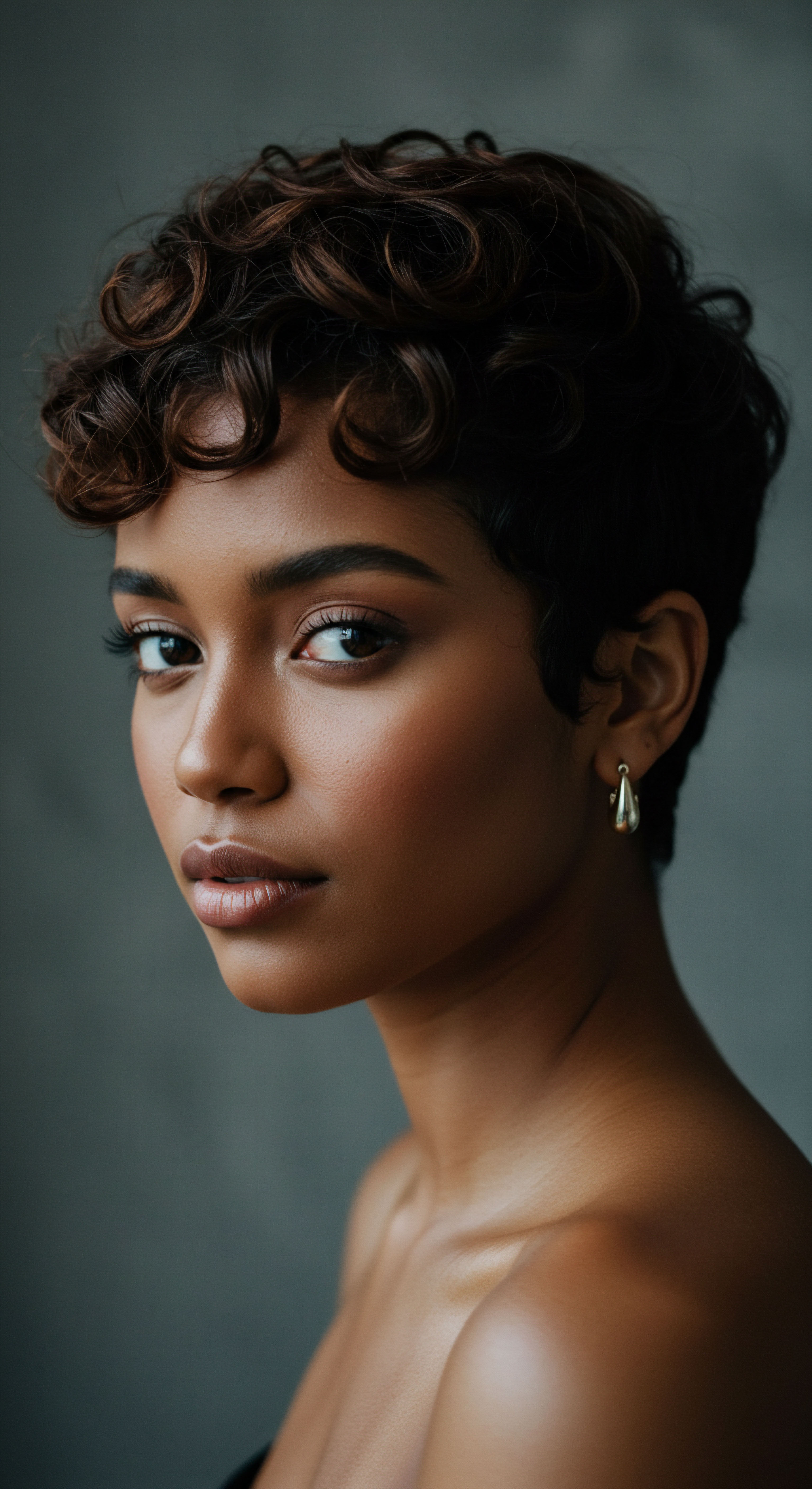
Hair Growth Cycles and Influencing Factors
Hair growth is a cyclical process, regardless of texture, proceeding through anagen (growth), catagen (transition), and telogen (resting/shedding) phases. However, the unique characteristics of textured hair, such as its natural tendency towards dryness and susceptibility to breakage at the points of curl, can influence the perceived length and health of each cycle. External factors, including environmental humidity, mechanical stress from styling, and chemical treatments, all play a role in how long a strand remains in its anagen phase before shedding.
Understanding these cycles helps set realistic expectations for growth and encourages practices that minimize breakage, allowing strands to reach their full potential. For example, excessive manipulation or tight styling can lead to traction alopecia, a form of hair loss caused by prolonged pulling on the hair follicles. This is a stark reminder that gentleness and consistent, informed care are paramount for maintaining the health and integrity of textured hair throughout its natural lifespan.
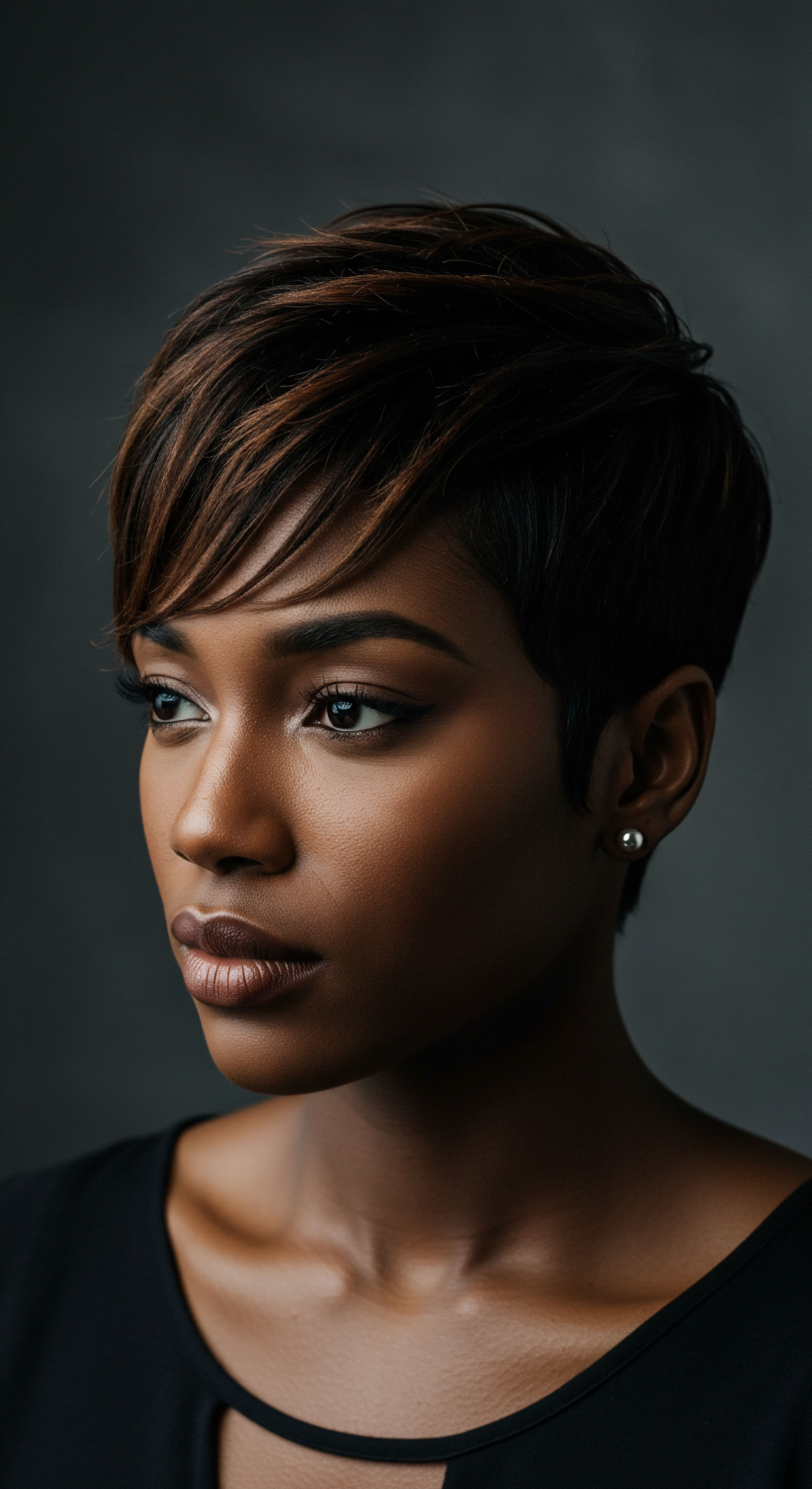
Ritual
To consider the daily or weekly act of caring for textured hair a mere chore would be to miss its profound capacity for shaping inner experience. It is a deliberate act, a conscious decision to engage with one’s physical self in a way that can feel both deeply personal and universally resonant. This section moves from the foundational understanding of hair’s structure to the practical application of that knowledge, exploring how consistent routines, from cleansing to styling, become more than just steps in a process; they transform into meaningful rituals that soothe the spirit and bolster self-perception. Here, the wisdom of practiced hands meets the desire for tangible, visible results, creating a space where care becomes a conduit for contentment.

Building Personalized Textured Hair Regimens
A truly beneficial hair care regimen for textured hair is never a one-size-fits-all prescription. It is a custom-built sanctuary, tailored to the individual’s specific hair needs, lifestyle, and environmental factors. The foundation of any effective routine begins with understanding the hair’s porosity, density, and elasticity, then selecting products that complement these characteristics. A low porosity hair type, for instance, benefits from lightweight products and heat to help open the cuticle, while high porosity hair thrives with heavier creams and butters to seal in moisture.
The cadence of the routine matters as well. For some, a weekly wash day is sufficient, allowing for thorough cleansing, deep conditioning, and styling. For others, particularly those with very dry or coily hair, a mid-week refresh or co-wash might be essential to maintain hydration. The beauty of a personalized regimen lies in its flexibility and responsiveness to the hair’s changing needs, whether due to seasonal shifts, hormonal fluctuations, or simply daily activity.
A consistent hair care routine, thoughtfully tailored to individual needs, evolves into a deeply personal ritual that can significantly enhance psychological well-being.
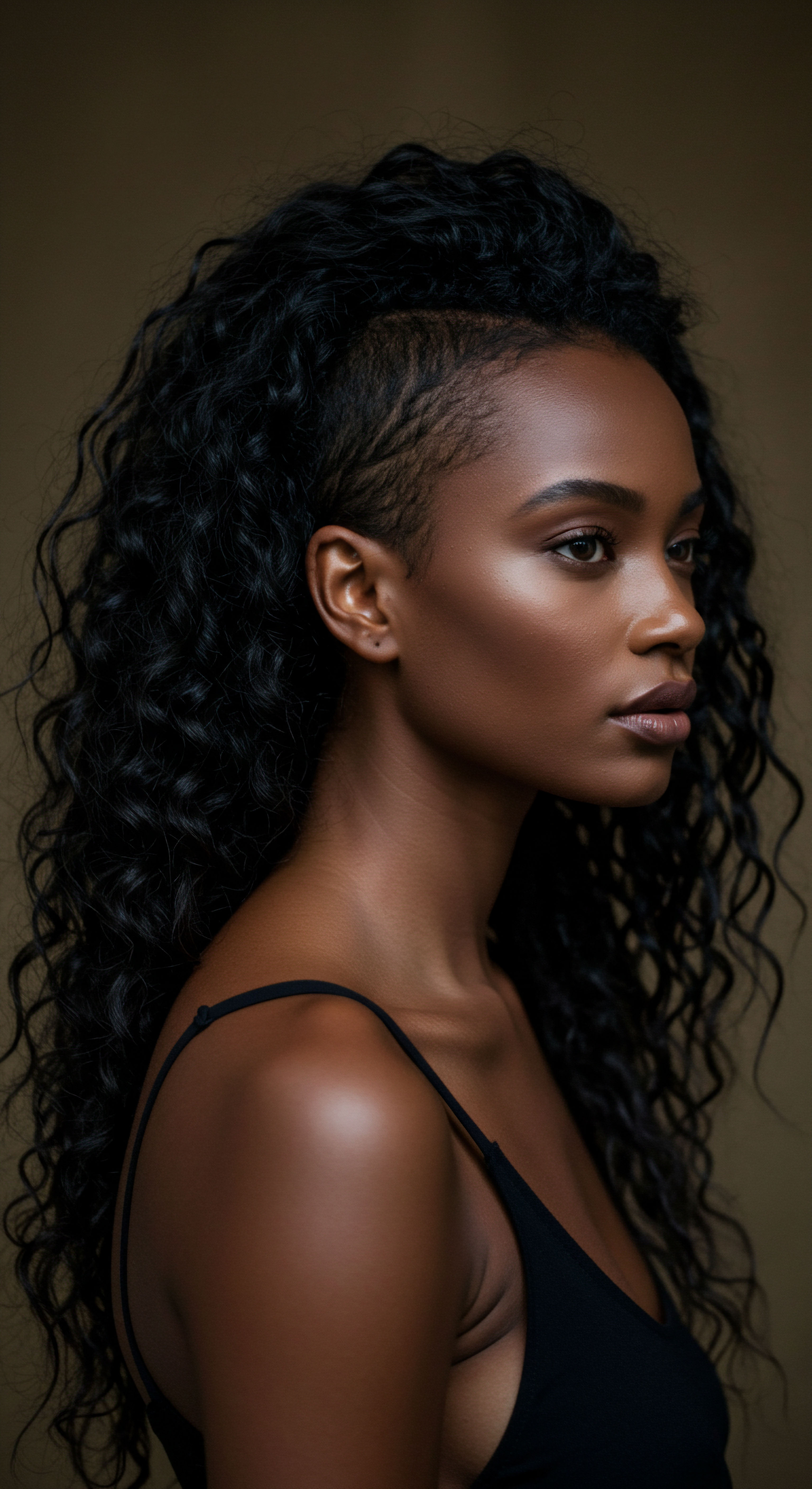
The Nighttime Sanctuary Essential Sleep Protection and Bonnet Wisdom
The quiet hours of sleep, often overlooked in hair care, hold immense power for textured strands. Nighttime protection is not merely about preserving a style; it is about safeguarding the hair’s integrity against friction, tangles, and moisture loss that can occur against absorbent pillowcases. This is where the wisdom of bonnets, silk scarves, and satin pillowcases truly shines. These accessories create a gentle, low-friction environment, allowing the hair to glide rather than snag, preserving its moisture and preventing breakage.
Consider the simple act of donning a silk bonnet before bed. For many with textured hair, this has become a nightly ritual, a silent promise to their strands that they will be protected. This consistent, deliberate act contributes to less frizz, fewer tangles, and improved moisture retention, leading to healthier hair over time. The tangible benefits translate into a sense of control and confidence that extends beyond hair health, touching upon daily outlook.
| Protection Type Silk Bonnet |
| Primary Benefit Reduces friction, retains moisture, preserves styles |
| Hair Type Suitability All textured hair types, especially coily and curly |
| Protection Type Satin Pillowcase |
| Primary Benefit Minimizes friction, prevents breakage |
| Hair Type Suitability All hair types, good for those who dislike head coverings |
| Protection Type Pineapple Method (Loose Bun) |
| Primary Benefit Maintains curl definition, reduces stretching |
| Hair Type Suitability Curly and wavy hair, for preserving volume |
| Protection Type Selecting the right nighttime protection method contributes significantly to overall hair health and morning manageability. |

Ingredient Deep Dives for Textured Hair Needs
The products we choose are the tools of our ritual, and understanding their ingredients is akin to understanding the language of our hair. For textured hair, the emphasis often lies on hydration and gentle cleansing. Ingredients like humectants (glycerin, hyaluronic acid) draw moisture from the air, while emollients (shea butter, argan oil) soften and smooth the hair shaft. Proteins (keratin, wheat protein) can strengthen strands, but must be used judiciously, as too much can lead to stiffness.
A conscious selection of products free from harsh sulfates, drying alcohols, and heavy silicones that can build up and prevent moisture penetration is paramount. The act of reading labels, researching ingredients, and making informed choices becomes a form of self-advocacy, a demonstration of respect for one’s own body and its unique needs. This deliberate choice, rather than simply grabbing the nearest bottle, strengthens the personal connection to the care routine.
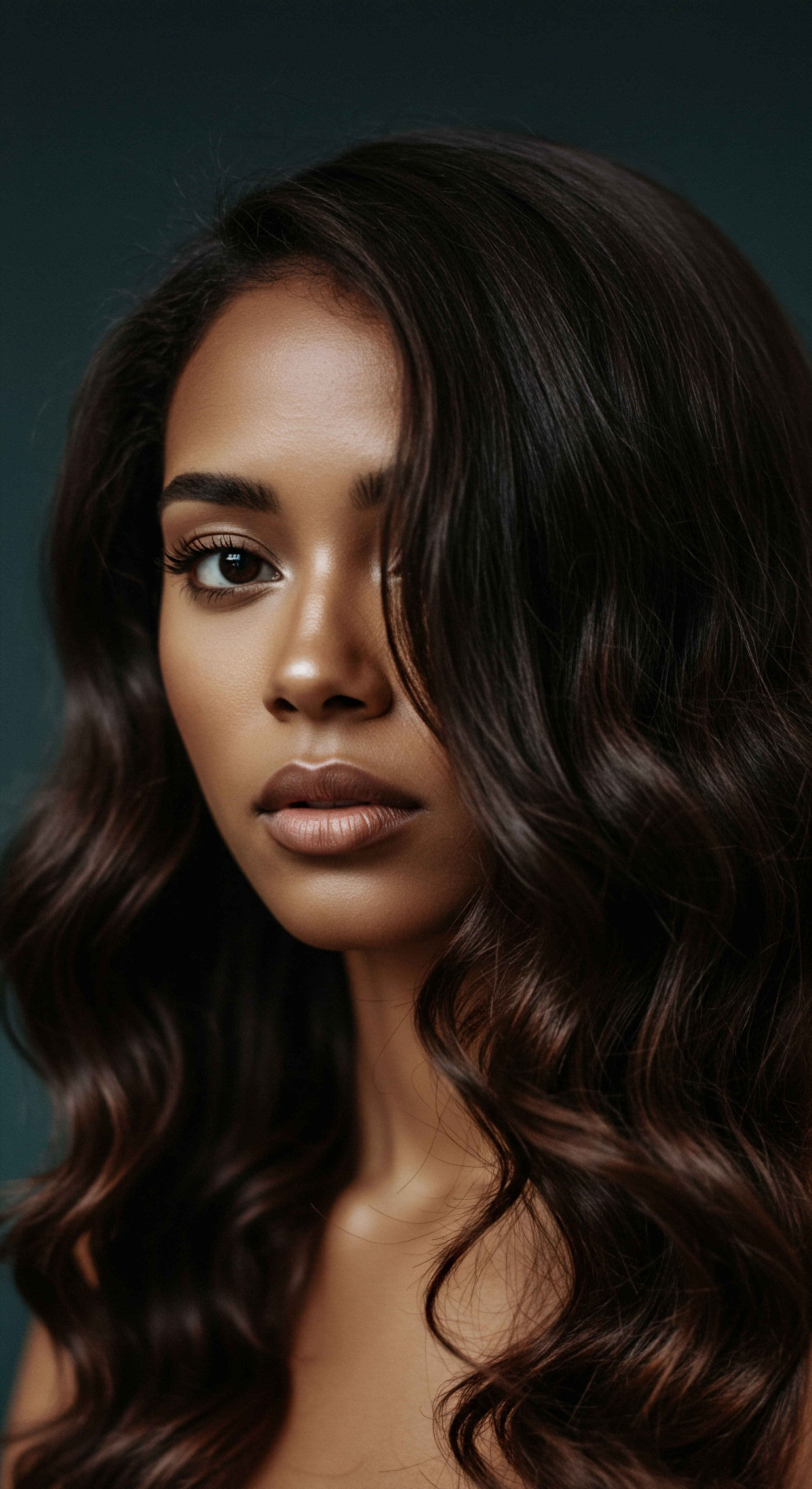
Textured Hair Problem Solving Compendium
Even with the most dedicated routine, challenges can arise. Dryness, breakage, tangles, and scalp irritation are common concerns for individuals with textured hair. A consistent routine provides a framework for identifying these issues early and implementing targeted solutions.
For instance, persistent dryness might indicate a need for more frequent deep conditioning or a change in sealing oils. Excessive breakage could point to over-manipulation or a need for protein treatments.
The ability to address these problems systematically, rather than reactively, brings a sense of calm and competence. It transforms potential frustration into an opportunity for deeper understanding and refinement of the care ritual. This problem-solving aspect, rooted in consistent observation and informed adjustment, is a quiet testament to the power of routine in maintaining both hair health and personal equilibrium.

Holistic Influences on Hair Health
The vitality of textured hair extends beyond topical applications; it is intrinsically linked to overall well-being. Diet, hydration, stress levels, and even sleep quality all play a role in the health of our strands. A balanced diet rich in vitamins, minerals, and proteins provides the building blocks for strong hair.
Adequate water intake ensures hydration from within, complementing external moisturizing efforts. Chronic stress, conversely, can lead to hair shedding or even exacerbate conditions like alopecia.
Therefore, a consistent hair care routine, while focused on the external, often encourages a more holistic awareness of self. The discipline required for consistent hair care can ripple outwards, prompting healthier lifestyle choices that, in turn, benefit hair. This interconnectedness transforms the hair care journey into a broader path of self-care, where every choice, from the food we eat to the products we apply, contributes to a greater sense of well-being.
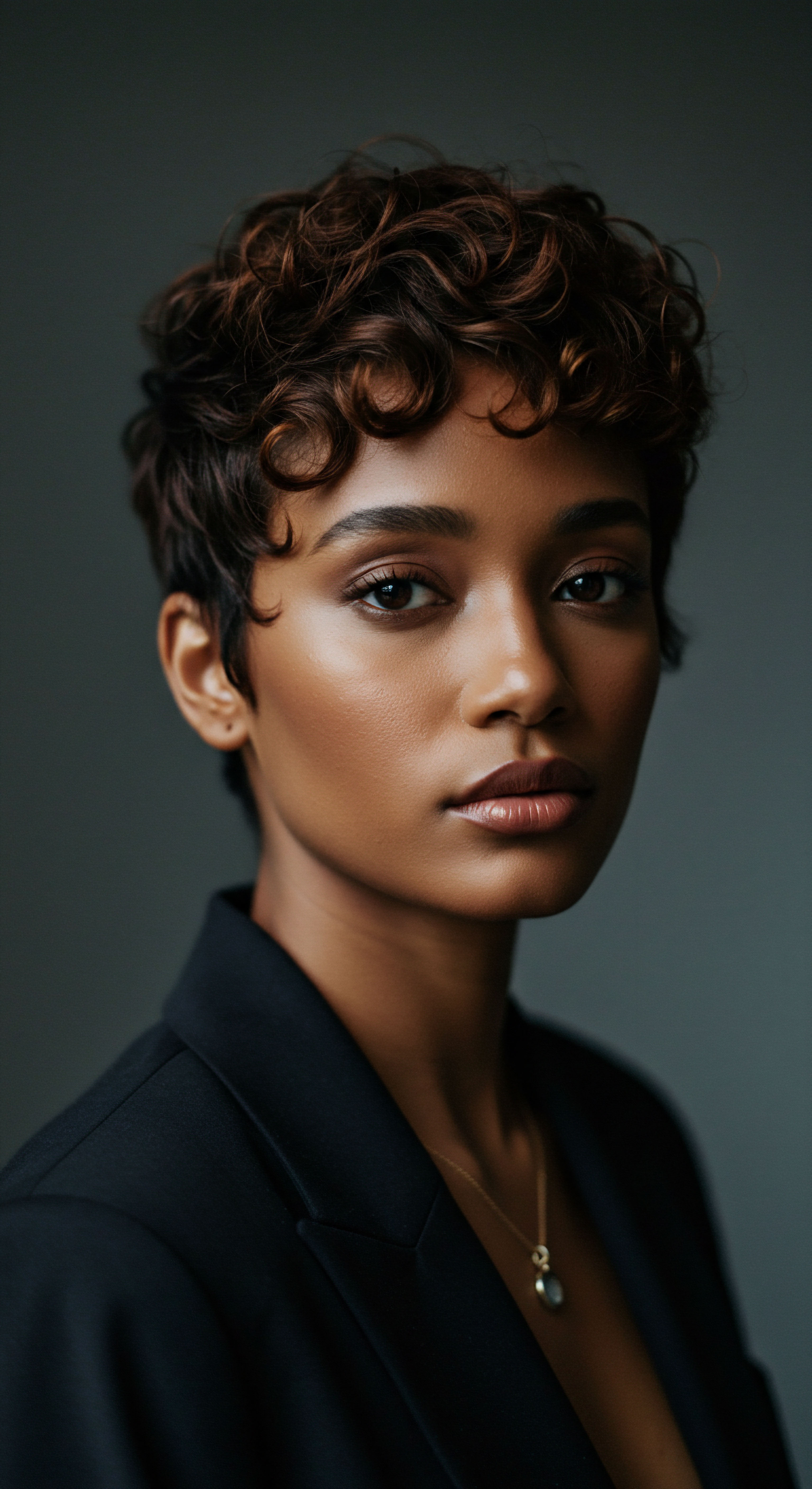
Relay
What lies beneath the surface of a consistent hair care routine for textured hair? It is more than just a sequence of steps; it is a profound interaction with self, culture, and societal perceptions. This section delves into the intricate interplay of biological, psychological, social, and cultural factors that converge in the experience of textured hair care.
Here, the seemingly simple act of tending to one’s hair transforms into a complex, multi-dimensional expression of identity and resilience, inviting a deeper, more reflective understanding of its psychological dividends. We consider how consistent care can truly enhance well-being by examining its impact on self-perception, social engagement, and even the historical echoes of hair’s significance.

Self-Perception and Body Image
The direct link between consistent hair care and enhanced psychological well-being often manifests most clearly in the realm of self-perception. For individuals with textured hair, particularly those from Black and mixed-race backgrounds, hair has historically been a significant marker of identity, beauty, and even political statement. When hair is consistently cared for, healthy, and vibrant, it contributes to a positive body image.
This is not about conforming to external beauty standards, but about cultivating a personal sense of pride and confidence in one’s natural attributes. The act of consistently tending to one’s hair, seeing it respond and flourish, can build a quiet, steady stream of self-affirmation.
A study published in the Journal of Black Psychology explored the relationship between hair satisfaction and self-esteem among Black women, finding a positive correlation. Participants who reported higher satisfaction with their hair also tended to exhibit higher levels of self-esteem. This suggests that the effort invested in consistent hair care, which often leads to improved hair health and appearance, directly contributes to a more favorable self-view. The routine becomes a conduit for fostering self-acceptance and appreciation for one’s unique beauty.

Societal and Cultural Significance of Textured Hair
Textured hair carries immense societal and cultural weight. For centuries, its styling has been a powerful form of communication, a symbol of heritage, resistance, and community. The consistent care of textured hair, therefore, is not merely a personal act; it is an engagement with a rich cultural lineage.
From ancient African braiding traditions to the natural hair movement of today, hair care practices have served as a means of cultural preservation and expression. When an individual commits to a routine, they are often unconsciously participating in this broader cultural conversation, drawing strength and connection from a shared history.
This cultural connection can provide a profound sense of belonging and validation, especially in societies where textured hair has historically been marginalized or deemed “unprofessional.” The consistent cultivation of healthy, natural hair can be an act of defiance, a quiet reclaiming of beauty standards, and a powerful statement of self-worth. The psychological uplift comes from this alignment with heritage and the affirmation of one’s cultural identity.

Mindfulness and Ritualistic Practice
Can the simple act of hair care become a mindful practice? Absolutely. The deliberate, repetitive motions involved in cleansing, detangling, moisturizing, and styling textured hair can serve as a form of meditation.
In a world often characterized by constant distraction, these moments offer an opportunity to slow down, focus on the present, and engage with sensory experiences—the feel of the water, the scent of products, the sensation of fingers through strands. This focused attention can reduce stress and anxiety, promoting a sense of calm and groundedness.
The ritualistic nature of consistent hair care routines also provides structure and predictability. In times of uncertainty, having a dependable routine can be incredibly comforting, offering a small corner of control in a chaotic world. This sense of order and self-agency, cultivated through regular hair care, can significantly contribute to psychological stability and a feeling of mastery over one’s own well-being.
| Benefit Category Enhanced Self-Esteem |
| Description Improved confidence and self-worth from healthy, well-maintained hair. |
| Underlying Mechanism Positive feedback loop from visible results; validation of self-care efforts. |
| Benefit Category Stress Reduction |
| Description Mindful engagement during routine fosters calm and present moment awareness. |
| Underlying Mechanism Ritualistic nature provides predictability; sensory engagement acts as a grounding force. |
| Benefit Category Cultural Connection |
| Description Affirmation of identity through practices linked to heritage. |
| Underlying Mechanism Participation in a shared cultural legacy; resistance to oppressive beauty standards. |
| Benefit Category Increased Self-Efficacy |
| Description Feeling capable and in control of one's hair health and appearance. |
| Underlying Mechanism Successful problem-solving; consistent positive outcomes from dedicated effort. |
| Benefit Category The psychological benefits extend beyond aesthetics, influencing core aspects of personal and cultural identity. |

The Interplay of Physical and Mental Health
The relationship between physical health and mental health is bidirectional. When individuals consistently care for their hair, they are engaging in a form of self-care that sends a powerful message to the brain ❉ “I am worthy of this attention; I am worth investing in.” This positive reinforcement can alleviate symptoms of depression and anxiety, providing a tangible pathway to feeling better. The physical sensation of clean, moisturized, and well-styled hair can also improve mood and comfort, directly influencing mental state.
Conversely, neglecting hair care can sometimes be a symptom of psychological distress, creating a negative feedback loop. When one feels overwhelmed, the effort required for a comprehensive textured hair routine might seem insurmountable. However, even small, consistent steps can break this cycle, providing a sense of accomplishment and a gentle nudge towards greater self-care. The consistent routine, therefore, becomes a quiet ally in navigating the complex terrain of mental well-being, offering a reliable touchstone for self-connection.
Consider the impact of Hair Loss or significant hair damage on psychological well-being. For many, hair is deeply tied to their sense of attractiveness and identity. Conditions like alopecia can lead to significant distress, anxiety, and social withdrawal.
Consistent care, aimed at preventing such issues or managing them effectively, acts as a preventative measure for these potential psychological burdens. The proactive engagement with hair health, rather than reactive damage control, cultivates a stronger sense of resilience and mental fortitude.
Consistent hair care routines serve as a powerful conduit for fostering positive self-perception, cultural connection, and mindfulness, deeply impacting psychological well-being.
This deeper understanding of the “why” behind hair care transforms it from a superficial act into a meaningful practice. It illuminates how the seemingly simple steps of a routine are, in fact, sophisticated tools for enhancing not just external appearance, but the profound inner landscape of the individual.

Reflection
The journey through the intricate world of textured hair care reveals far more than just techniques and products. It uncovers a profound connection between the strands that crown us and the quiet workings of our inner lives. From the very roots of its unique anatomy to the purposeful rituals of its daily tending, and the deep cultural currents that flow through its history, consistent hair care for textured hair stands as a testament to the power of deliberate self-engagement. It is a dialogue of discovery, a practice of patience, and a celebration of identity, culminating in a deeper, more resilient sense of self-worth and psychological peace.

References
- R. B. Smith, “Hair Satisfaction and Self-Esteem Among Black Women,” Journal of Black Psychology, vol. 45, no. 1, pp. 3-24, 2019.
- C. E. Byrd and L. D. Tharps, Hair Story Untangling the Roots of Black Hair in America, St. Martin’s Press, 2001.
- A. M. Gittens, The Science of Black Hair A Comprehensive Guide to Textured Hair Care, Createspace Independent Publishing Platform, 2013.
- J. H. Deese, “The Psychology of Hair and Hair Care,” The Journal of the American Academy of Dermatology, vol. 55, no. 1, pp. 129-136, 2006.
- E. S. K. Chen and A. S. M. Leung, “Hair as a Social and Cultural Phenomenon,” The International Journal of Cosmetic Science, vol. 31, no. 4, pp. 247-252, 2009.
- L. J. Davis and C. J. Yip, “The Role of Hair in Identity and Self-Esteem,” The International Journal of Trichology, vol. 8, no. 3, pp. 110-115, 2016.